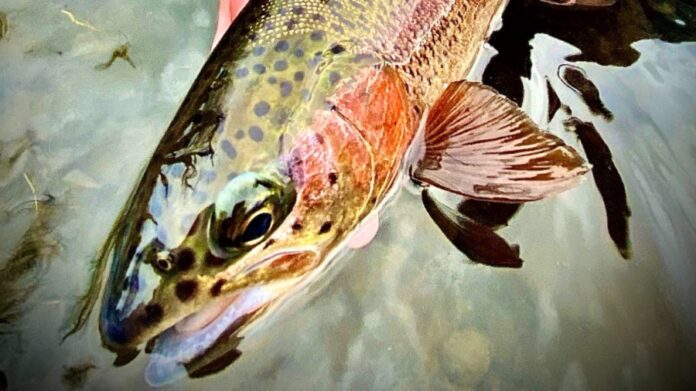Written By: Tye Kruger, Confluence Fly Shop
All photos by Confluence Fly Shop
Beginning high in the Cascades, the Deschutes river winds through a varied landscape of high desert, pine forest, and basalt-lined canyons before joining the mighty Columbia more than 200 miles downstream. Its cold, rich waters produce a bounty of insects and other invertebrates along the way, on which wild trout eagerly feast. Some of springtime’s most notable hatches include salmon flies, golden stones, yellow sallies, green drakes, pale morning duns, and several species of caddis, all of which can produce fantastic dry-fly action for early-season anglers. We recommend stocking your box with the following patterns:

The lower Deschutes produces some of the densest concentrations of giant salmon flies and golden stones of any waterway in the Western U.S. From mid-May through mid-June, hordes of these massive insects gather in the grass and trees along the riverbank, seeking the relative safety of dry land. Try to present your Chubby Chernobyl beneath overhanging branches or along grassy banks to best imitate the naturals. These large bugs generally don’t drift far before being inhaled by a hungry Redband trout.


Arguably among the best salmonfly and general-purpose stonefly patterns around, and a favorite on the Deschutes long after the first giant stoneflies have emerged. Cast it at spooky trout that have seen everything else, when the pressure is high and the fish are tight-lipped.

Because of this pattern’s paraloop-style wing design, it sits very low in the surface film, yielding better hookups. Rig it behind a more visible indicator-type dry fly, dress the wing with floatant, and then drift it down any visible feeding lane likely to hold fish.


This pattern expertly imitates the moment when a mayfly sheds its nymphal shuck, and then struggles in the surface film to free itself. Trout often capitalize on mayflies during this vulnerable stage because they are a guaranteed meal. Fish this fly on light tippet during a heavy hatch when selective trout are not feeding on the duns, but are instead eating emerging insects just under the water’s surface.

This pattern’s slimmer profile often fools even the most finicky fish. It’s also a great fly for smaller tributaries because of its easy-to-see design and lifelike profile.
Tye Krueger is the owner of Confluence Fly Shop in Bend, OR.
Credit: Source link





























